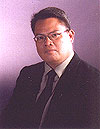|
| The Battle of Agdangan | |
|
Paulix B. Robosa
After the Philippine Revolution, the Filipino-American war is considered as another glorious period in Philippine History. After fighting the Spaniards and founding the first Philippine Republic, Aguinaldo declared war on his erstwhile ally and protector, the United States of America. The newly born Filipino nation found itself in arms against the rich and budding world power on the path of succeeding the Spaniards as new colonial masters. The American soldier who arrived in the Philippines at the turn of the Century was well fed, well equipped, larger and better trained than the Filipino fighter he was sent to kill or capture. On his side, the Filipino had ingenuity, craftiness and cunning (if not courage), and the pent-up hatred for a foreign master. In the Filipinos' revolt against the Spaniards, he managed to capture for his use and assortment of firearms and artillery, but the Mausers and the Remingtons were never enough, so he learned to use with effectiveness the "macheteros" or bolomen in his self-taught warfare. He relied on the "maestranza" or arsenal, to provide him with the much needed ammunition. This unit was usually made up of teenage boys whose task was to gather spent bullet shells, refill them with homemade gunpowder and lead slugs, and in the heat of battle, weave in and out of the trenches helping to reload the rifles. Alongside the "fusilleros" or riflemen were deployed the "tiradores" or shooters who fired arrows from bows, stones from slingshots, and in some instances, even hurled bamboo spears. With this deplorable conditions, conventional warfare for the Filipino officers was as basic as constructing barricades or trenches, then deploying the riflemen and shooters at the front and stationing the bolomen at the back. When the enemy is in range, the riflemen fired volleys shooting only at a target, as the enemy got closer, the shooters fired and the bolomen prepare for hand to hand combat. This type of battle between the Filipinos and the Americans went only for so long, as in the beginning of the war, when the opposing armies faced each other along clearly drawn battle lines. Almost all of these battles were disastrous for the Filipinos and ended with the Filipinos in retreat. As the war progressed though, the Filipino generals realized that the tropical climate and terrain of the Philippines gave advantage to a less grandiose but more fluid form of warfare - guerilla warfare. Before the Filipinos in Bicol switched to guerilla warfare, they fought one last battle where the battle lines were drawn. On the road to Baao, in Agdangan, the Filipinos dug a trench and arrayed riflemen, shooters and bolomen in an attempt to stop an advancing enemy column. It was the last pitched battle fought in Ambos Camarines during the Filipino-American war.
|
|
|
|

|

